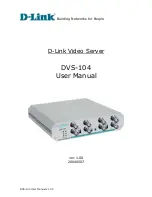
- 52 -
BIOS Setup
BIOS (Basic Input and Output System) records hardware parameters of the system in the EFI on the
motherboard. Its major functions include conducting the Power-On Self-Test (POST) during system startup,
saving system parameters, loading the operating system etc. The BIOS includes a BIOS Setup program that
allows the user to modify basic system configuration settings or to activate certain system features. When the
power is turned off, the battery on the motherboard supplies the necessary power to the CMOS to keep the
configuration values in the CMOS.
To access the BIOS Setup program, press the <DEL> key during the POST when the power is turned on.
Chapter 5 BIOS Setup
• BIOS flashing is potentially risky, if you do not encounter any problems when using the current
BIOS version, it is recommended that you don't flash the BIOS. To flash the BIOS, do it with
caution. Inadequate BIOS flashing may result in system malfunction.
• It is recommended that you not alter the default settings (unless you need to) to prevent system
instability or other unexpected results. Inadequately altering the settings may result in system's
failure to boot. If this occurs, try to clear the CMOS values and reset the board to default values.
(Refer to the
Exit
section in this chapter or introductions of the battery/clearing CMOS jumper in
Chapter 1 for how to clear the CMOS values.)
BIOS Setup Program Function Keys
<
f
><
g
>
Move the selection bar to select the screen
<
h
><
i
>
Move the selection bar to select an item
<+>
Increase the numeric value or make changes
<->
Decrease the numeric value or make changes
<Enter>
Execute command or enter the submenu
<Esc>
Main Menu: Exit the BIOS Setup program
Submenus:
Exit
current
submenu
<F1>
Show descriptions of general help
<F3>
Restore the previous BIOS settings for the current submenus
<F9>
Load the Optimized BIOS default settings for the current submenus
<F10>
Save all the changes and exit the BIOS Setup program
Summary of Contents for R292-4S0
Page 14: ...Hardware Installation 14 1 3 System Block Diagram ...
Page 15: ... 15 Hardware Installation ...
Page 28: ...System Hardware Installation 28 6 1 2 3 4 5 4 ...
Page 40: ...System Hardware Installation 40 Rear Fan Cable GPU Card 0 Power Cable for R292 4S0 only ...
Page 45: ... 45 System Hardware Installation NVMe Card 0 1 NVMe Card 2 3 ...
Page 46: ...System Hardware Installation 46 NVMe Card 4 5 R292 4S0 R292 4S1 ...
Page 47: ... 47 System Hardware Installation NVMe Card 6 7 R292 4S0 R292 4S1 ...
Page 48: ...System Hardware Installation 48 NVMe Card 8 9 ...
Page 64: ...BIOS Setup 64 5 2 4 PCI Subsystem Settings ...
Page 73: ... 73 BIOS Setup 5 2 12 Intel R X710 10GBASE T Network Connection ...
Page 75: ... 75 BIOS Setup 5 2 13 VLAN Configuration ...
Page 80: ... 80 BIOS Setup 5 3 1 Processor Configuration ...
Page 83: ... 83 BIOS Setup 5 3 3 UPI Configuration ...
Page 122: ... 122 BIOS Setup This page intentionally left blank ...
















































